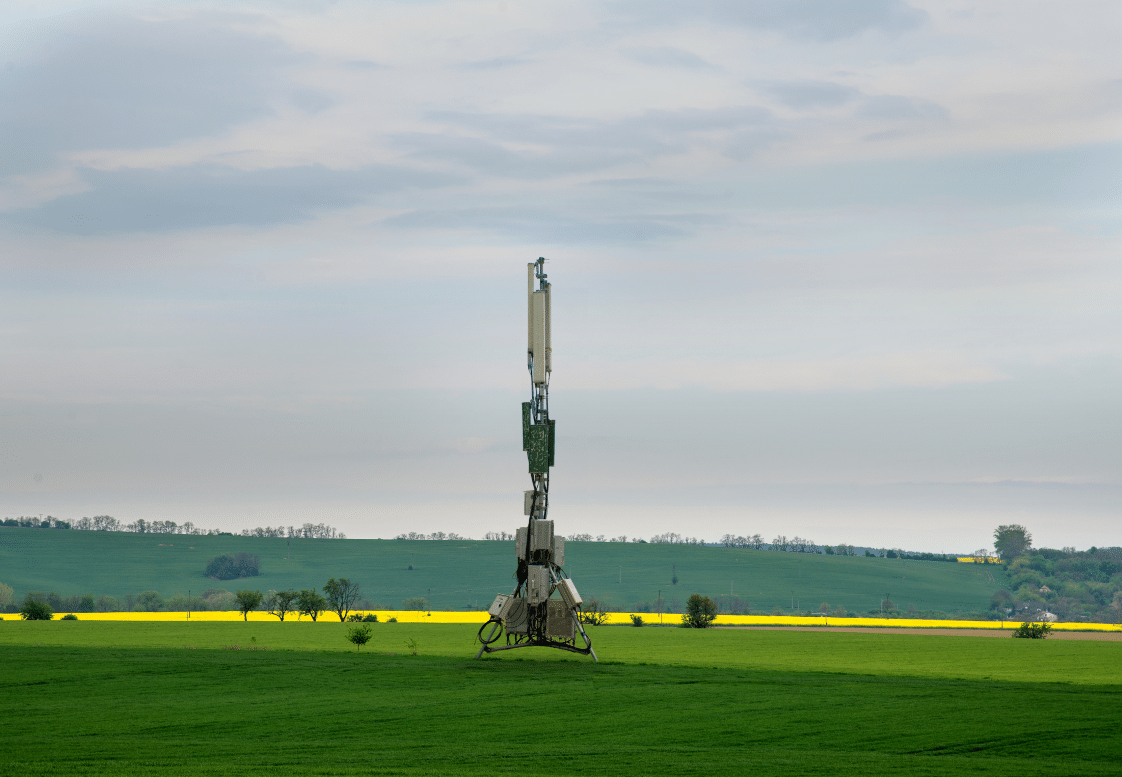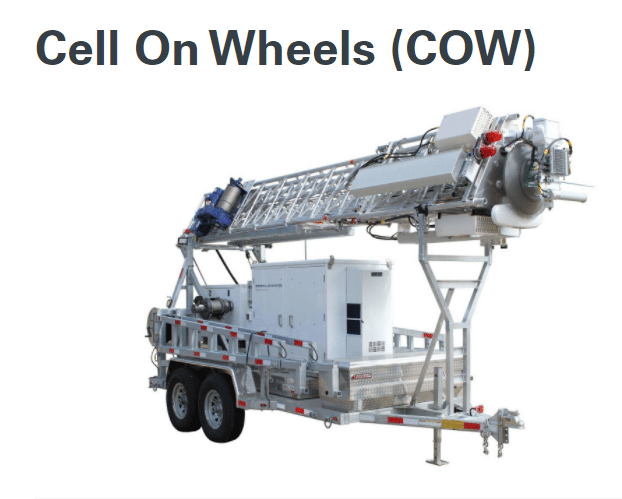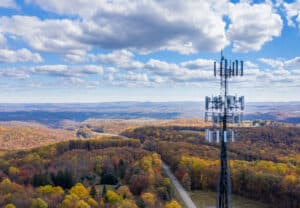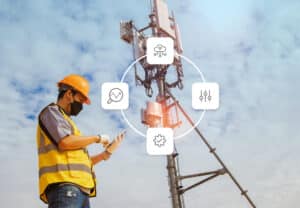
In the last few years, the demand for portable network infrastructure has seen a steep increase. With more industries and sectors shifting towards digital transformation and IoT technologies, the demand for stable network connectivity is at an all-time high. A stable and uninterrupted network is critical during disasters or while hosting large-scale events, but there is always a coverage gap.
To bridge the coverage gaps and solve other challenges, we need to add more cell towers. Unfortunately, the construction of cell towers is a slow process, and is not logistically or economically feasible for one-off events. This is why we need Cell on Wheels.
The units are portable and reliable which makes them an excellent option for temporary network setups, but also usable in more long-term installations. But before we delve into the subject, let’s take a step back to understand what Cell on Wheels actually is.
What is Cell on Wheels (CoW)

In simple terms, Cell on Wheels (CoW) is a portable cell tower that is easily deployed and retrieved. It includes a cellular antenna, transceiver device, battery, and other necessary equipment required to provide a stable wireless mobile network as needed. All of these platforms are mounted over vehicles such as trucks or trailers, which makes the entire setup portable or, as they say, “on-wheels.”
These temporary cell towers are mainly used in three different scenarios:
- In disasters such as tsunamis and forest wildfires, first responder teams require proper network connections to communicate appropriately during these rescue tasks.
- When large-scale events such as concerts or sports matches like the Super Bowl happen, there are sudden bursts of cellular activity that needs to be catered to with a stable, good-quality network.
- To bridge the coverage gap in remote locations where building a base station would be more time-consuming and expensive.
Now that you know what Cell on Wheels or mobile sites are, let’s look at how and why they are essential.
Why is Cell on Wheels Important?
Even in today’s era, as we are moving towards digitalization and wireless communication, about 600 million people across the globe have no internet access due to a lack of mobile network coverage. When it comes to use cases such as industrial facilities and power plants, they are already using Cell on Wheels; Here’s why:
Accessing and Monitoring Remote Sites
Remote locations have numerous restrictions, from their location to the terrain, and logistics of bringing the materials for and constructing a telecom base station. For these reasons and others, the installation of cell towers becomes a considerable challenge. Besides this, monitoring these sites all at once becomes a hassle without a remote monitoring and management (RMM) solution.
A Cell on Wheels can be used with remote monitoring management solutions for such locations. These provide features such as Cut-Through, which allow the site to be accessed and monitored much more efficiently without being physically present.
Time and Cost Efficiency
Building permanent base stations take a lot of time and require an enormous budget. However, for large-scale events that take place only once or twice a year or for industries such as construction where there’s constant relocation, it is better to acquire a Cell on Wheels since it saves both time and money. These mobile cell towers can also be rented rather than purchased outright, further driving down costs.
Emergency Communication and Response
When natural disasters such as storms, hurricanes, earthquakes, or wildfires occur, there is an good chance that cell towers will be destroyed or will not function properly. For instance, the 2005 hurricane Katrina wiped out most of the cell towers in Louisiana, and communications to that area were nearly knocked out.
So, to bring back communications for first responders so that rescue operations can take place properly, Cell on Wheels platforms were brought in. They provided the stable connectivity emergency services needed to effectively respond to the situation when network access is disrupted.
Scalability of Operations
For sectors such as telecommunications and Industry 4.0, scalability and modularity are some of the most essential capabilities to drive success. A Cell on Wheels can make this possible since companies can deploy these as ad-hoc network infrastructure with relative ease, providing connectivity until permanent infrastructure can be deployed.
Furthermore, since IoT is slowly becoming the backbone of effective operations in these industries, the number of devices connected and data requirements are increasing. With Cell on Wheels, network support can easily be provided to the companies as expansion occurs until more permanent infrastructure is completed.
These are just a few ways in which Cell on Wheels are essential parts of network infrastructure. The technology has quite a few use cases across various industries as well. Let’s have a look at them.
What Are Some Use Cases of Cell on Wheels?
As mentioned earlier, Cell on Wheels finds its applications in large-scale events, emergency communications, and expanding network coverage in areas lacking mobile network connectivity. However, mobile cell towers are also used in different industries that depend on wireless communication. Some of those are:
- Telecom infrastructure development, when gaps in long-term network assembly need to be filled temporarily
- Industry 4.0 or Industrial IoT (IIoT), where the sheer amount of data and the latency requirement for information retrieval are rapidly increasing
- Remote industries such as Oil and Gas, whose operations keep moving, require cell on wheels tower for effective communication at their worksites
Besides these, other use cases include powerplants, construction projects, remote working sites for sectors such as mining, and more. Cell on Wheels is a versatile technology that can be enhanced with Galooli’s smart site management solution. Let’s have a closer look at how it does so.
How Do Galooli Solutions Improve Cell on Wheels?
Galooli’s remote energy management solution helps site and event operators monitor their mobile tower’s energy performance in real-time. Furthermore, it provides end-to-end remote management and monitoring solutions that reduce operational costs, increase energy efficiency, and help organizations meet carbon footprint goals.
We actively monitor the various energy assets used to power these mobile platforms, including generators, backup batteries, and solar panels. This includes live alerts to any potential maintenance issues and malfunctions, as well as energy asset performance outside established levels.


























